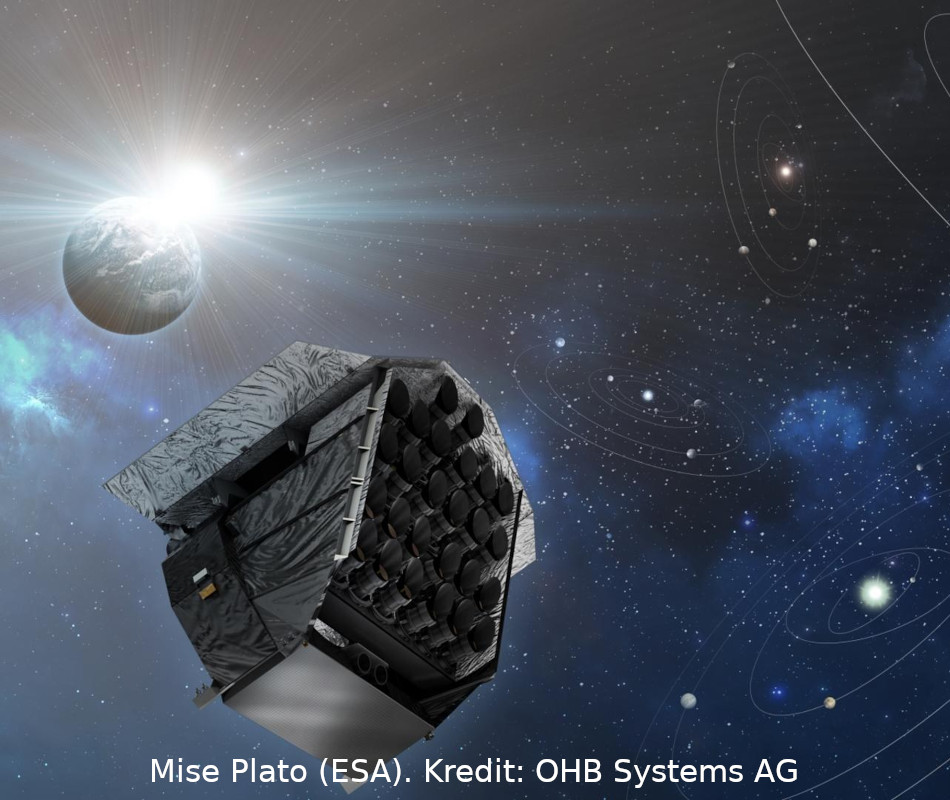The PLATO Mission: Finding the habitable planets in the local Universe
PLATO (PLAnetary Transits and Oscillations of stars) is ESA’s M3 mission, scheduled for launch end 2026. PLATO will provide high-precision, long-term photometric and asteroseismic data of a large number of stars to detect and characterize extrasolar planets, including terrestrial planets in the habitable zone of solar-like stars. PLATO will characterize planets in its core sample (V<11) for their radius via the transit method and determine their masses via ground-based radial-velocity follow-up. Asteroseismology will provide precise ages of planet host stars. A large sample of stars with V<13 will provide statistical information on detected exoplanets of all kinds. The PLATO data base of characterized planets will form a solid basis to put the Solar System into a wider context and allow for comparative exo-planetology. In addition, the precise stellar parameters obtained by asteroseismic studies will open new doors to better understand stellar interiors and allow us to constrain poorly-understood physical processes, like convection, improve our understanding of stellar evolution, and determine precise ages of stars and planetary systems.
The PLATO instrument consists of 24 cameras on a common optical bench with a total field-of-view (FoV) of about 2150 deg2, operating in white light. Two additional cameras serve as fine-guidance sensors and observe very bright stars (V<8.5) in red and blue light, respectively. A guest observer program open to the community upon an ESA call will allow observing additional targets in the PLATO FoV.
Odkaz na vědeckou konferenci, která se konala 27. – 30. 3. 2023 v Praze – https://stel.asu.cas.cz/platoweek/.



